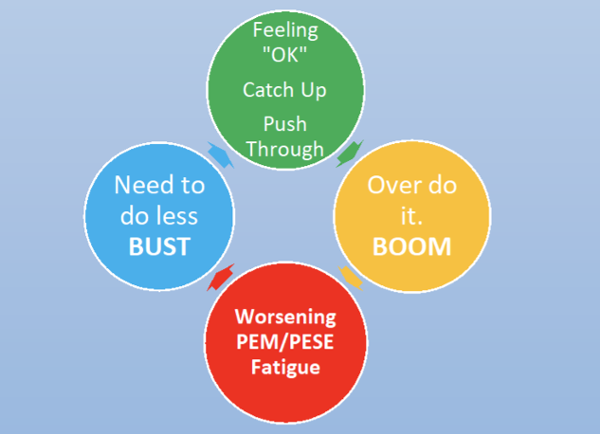What is PEM/PESE?

Post Exertional Malaise (PEM) or Post Exertional Symptom Exacerbation (PESE) are terms used to describe the worsening of symptoms after sensory overload, physical, mental emotional or social activity. The level of activity required to cause the worsening of symptoms is often regarded as minimal, when compared to a person’s previous level of activity tolerance. A characteristic of PEM/PESE is the delay in worsening symptoms, which can be anywhere from 12 to 48 hours after the activity.
PEM/PESE is experienced by everyone with a diagnosis of ME/CFS, and is a common experience for people living with long COVID or Post Viral Fatigue. PEM/PESE can be thought of using a boom and bust cycle. Naturally, we tend to do more activity when we feel well, but this approach will lead to a delayed increase in symptoms if we are living with PEM/PESE. When we don’t feel so well we tend to do less activity, allowing us some time to rest and recover, which in turn reduces symptoms. When we feel better again, we do more activity, and the cycle continues.

Managing PEM/PESE well can make a big difference in how you feel and is the key to symptom management for many people living with these conditions. This is best done using the 3Ps: Prioritising, Planning and Pacing. This link gives information on how to apply the 3P’s and a downloadable version of the advice is available. Advice is available in English and Welsh at the bottom of the linked page.